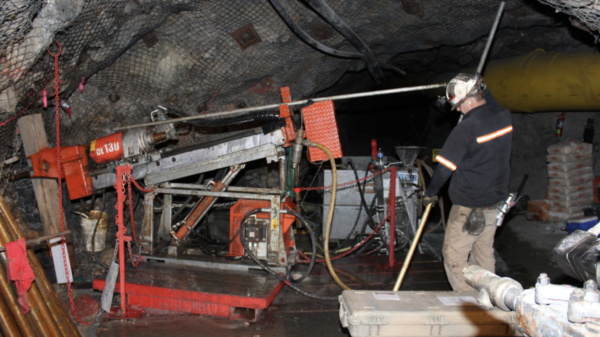The Federal Reserve announced a 25 basis-point interest rate cut on Thursday and only anticipates another 50 basis points in rate cuts for 2025.
The rate cut brought the interest rate to a range of 4.25 to 4.50 per cent. This marks a full percentage point decrease from its September level, when the central bank began easing the stringent monetary measures introduced to combat the inflation surge that started in 2021.
The announcement has also pulled gold and silver prices down slightly, with gold hitting a four-week low and silver prices a three-month low.
Federal Reserve officials predict that inflation will stay higher than earlier anticipated, with price growth expected to remain above their two per cent target throughout the next year, according to their updated Summary of Economic Projections released on Wednesday.
Jerome Powell, Federal Reserve chairman, described this as a “new phase” during his post-FOMC press conference, emphasizing that inflation concerns have resurfaced. He explained that the new policy setting remains “meaningfully restrictive” because inflation continues to exceed the two per cent target. Powell also asserted, “We still have work to do” to bring inflation down.
Officials now project that inflation, measured by the personal consumption expenditures price index, will end 2025 at an annual rate of 2.5 per cent, exceeding their September estimate of 2.1 per cent.
At a news conference on Wednesday, Jerome Powell acknowledged that policymakers’ earlier inflation projection had “kind of fallen apart” toward the year’s end. However, he firmly stated that officials “are not going to settle” for failing to achieve the two per cent target.
Read more: Golden conservation: Calibre environment leaders rendezvous to discuss achievements and goals
Read more: Calibre Mining highlights responsible energy usage in first-ever Climate Report
Sell-off pushes S&P futures to six-week low
Asian and European stock indexes mostly declined overnight, while U.S. stock indexes signal firmer openings as the New York day session begins. This modest rebound follows Wednesday’s sharp sell-off, which pushed the S&P 500 futures to a six-week low and marked the index’s biggest Fed decision-day loss since 2001 and its largest single-day loss since the 2020 pandemic.
In the meantime, President-elect Trump’s opposition caused a stopgap U.S. government funding deal to collapse, increasing the risk of a government shutdown this week. A Bloomberg report warned that failing to raise the debt ceiling and allowing the U.S. government to shut down would “definitely lead to chaos.” The report stated, “U.S. equities may be hit, but any spike in U.S. yields may drag down the rest of the world.”
The Bank of Japan maintained steady interest rates, while the Bank of England also held its rates steady during today’s meeting and cautioned about potential challenges as stagflation threatens the U.K. economy.
On Thursday, U.S. economic data releases include the weekly jobless claims report, the Philadelphia Fed business survey, third-quarter GDP, revised corporate profits, existing home sales, leading economic indicators, the Kansas City Fed manufacturing survey, and Treasury international capital data.
February gold futures bulls hold a slight overall near-term technical advantage but are losing momentum as the daily bar chart’s price uptrend has been negated. Bulls aim to close above solid resistance at USD$2,700.00, while bears target pushing prices below the November low of USD$2,565.00.
Read more: Calibre Mining finds high grade gold mineralization outside of its Valentine Mine resource
Read more: Five strong gold producers expanding in North America
Fluctuating prices may affect profitability and investment planning
Initial resistance stands at the overnight high of USD$2,640.90, followed by USD$2,650.00, with first support at the overnight low of USD$2,596.70 and then USD$2,580.00. Meanwhile, March silver futures bears have seized the near-term technical advantage, as bulls strive to close above resistance at USD$31.50, while bears focus on driving prices below the August low of USD$27.39. Silver’s immediate resistance lies at the overnight high of USD$30.14, followed by USD$30.50, with support levels at USD$29.50 and then USD$29.00.
The shifting technical outlook for gold prices could have significant downstream effects on industries such as jewelry manufacturing, where rising gold prices often lead to higher production costs and potentially dampened consumer demand.
Similarly, the gold mining sector may experience increased pressure as fluctuating prices affect profitability and investment planning. Companies like Calibre Mining Corp (TSE: CXB) (OTCMRKTS: CXBMF), which operates across North and Central America, could see impacts on their operational strategies and revenue projections as they navigate these market dynamics.
Another example is Kinross Gold Corporation (TSE: K) (NYSE: KCG), a major producer with operations across the Americas, West Africa, and Russia. Both companies may need to adjust their approaches to production and exploration to remain resilient in the face of evolving price trends and market volatility.
.
Calibre Mining is a sponsor of Mugglehead news coverage
.
joseph@mugglehead.com














